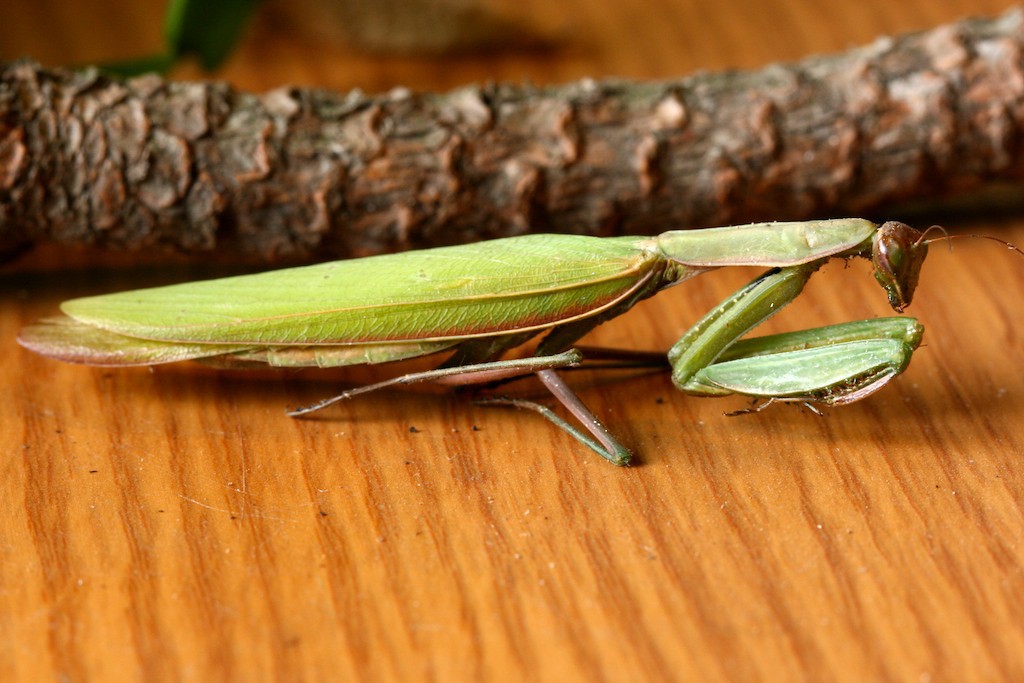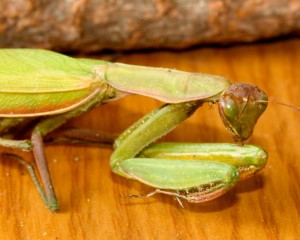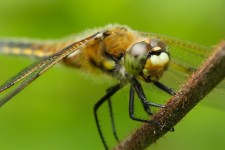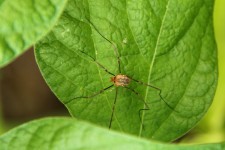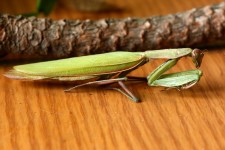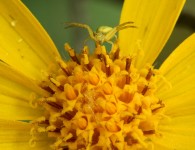Insects range from beautiful butterflies to everyday ants to creepy spiders and everything in between. Praying mantises are in between with their strange looks and fatal forelegs.
Mantises are not as common as ants, grasshoppers or spiders. Usually, you will accidentally find them. Praying mantises are typically green or brown and blend in well with their surroundings.
Their remarkable camouflage allows them to sit and wait for prey and helps them avoid being prey. A mantis will remain motionless while waiting for prey to pass by. Sometimes, they will gently rock side to side as if swaying in a breeze. Mantises eat moths, crickets, grasshoppers, flies and even each other.
As it waits, the mantis holds its forelegs folded against its prothorax in preparation to snatch an insect. This pose suggests an attitude of prayer and is how the praying mantis received its name.
A mantis can swivel its head 180 degrees, giving it a wide field of vision. A praying mantis has five eyes—three single eyes in between two compound eyes— that allow it to gauge the distance of moving objects up to 60 feet away.
If an insect is within range, the mantis slowly swivels its head and prothorax in the insect’s direction and then quickly snatches the insect with its spined forelegs.
Some mantises are fast enough to snatch a passing fly or flying insect out of the air. However, if an insect remains motionless, a mantis will not recognize it as prey and may walk past it or even over it without responding.
Once an insect is in the mantis’s pincerlike grip, the mantis begins to devour the insect alive because its strong grip prevents the prey from escaping.
When mantises are on the other end of the food chain, they have defensive strategies to survive. Birds, lizards, insectivorous mammals, bats and spiders eat mantises. To avoid predators, mantises can quickly run away, launch into flight or expose bright-colored markings. If those strategies don’t work and the predator approaches too closely, the mantis will immediately strike with its spined forelegs (even on a curious human).
If picked up, a mantis will bend its forelegs backwards over its prothorax and use its spines to ensure it is dropped or held more carefully.
If the mantis is only being held by a mid- or hind-leg, it will sacrifice it (self-amputation) to escape, just like western skinks do with their tails. The mantis can contract a special muscle at the base of the leg to release it while it pulls away. If the mantis is young, the leg will grow back.
A mantis will not sacrifice its front legs because without front legs it cannot catch food.
Mantises will eat their own kind. Female adults will eat other female’s young and, in some species, the female with eat the male before, during or after mating.
The spiny forelegs and triangular head are the two identifying characteristics of the strange-looking praying mantis. If you find one and want a closer look, be careful of the spiny forelegs.

